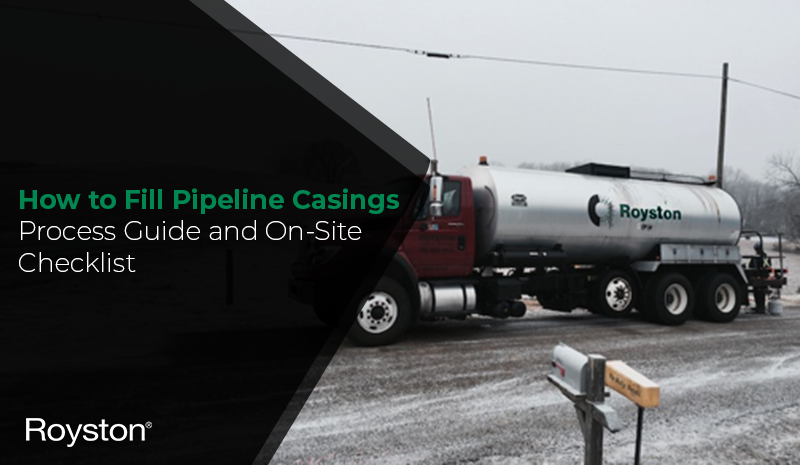Pipeline casings, also known as pipeline sleeves or conduits, are protective structures used to...
Casing Filler Checklist
Key information regarding the casing fill project is gathered and reviewed prior to submitting a proposal. Creating a checklist of actionable items leading up to the scheduled fill date will help the project run smoothly. For those directly associated with the casing fill work, having a pipeline casing checklist of critical processes aids in preparedness.
Prior to filling the pipeline casing, ensure you know:
- Are the vents clear, and have the end seals been pressure tested?
- Was water blown out of the casing to ensure a good fill on the morning of arrival?
- What type of connection are on the vent pipes?
- Flange or threaded pipe
- What is the diameter of the threaded pipe?
- Flange or threaded pipe
- Have you conducted pressure tests on the end seals?
- Tests should run for an hour and read 5-psi for boot seals and 10-psi for link seals
- How close can the wax pump truck get to the end vent connection?
- What length of hose is needed? (Cold weather conditions require shorter distances to prevent wax from cooling in the lines)
- Have we met the following:
- PPE requirements?
- Safety meeting requirements
- Do we require contractors to supply traffic control?
- Point of contact(s) onsite and cell number(s)
- Physical address for the crew to report and check-in
- Set meeting location and time. (Is a site escort required?)
- Procedures for signing in, getting badged, etc.
In summary, filling pipeline casings is no easy feat. Taking the proper measures goes a long way in making sure jobs are successful. With a lot of manpower and costs on the line, small mistakes can quickly escalate into major disasters. These guidelines serve as a good general guide to making the project run smoothly on the day of; but remember, each job is different and may pose unique challenges.
The specific pipeline corrosion protection measures employed may vary depending on factors such as the type of pipeline, environmental conditions, and regulatory requirements. It’s advisable to consult with corrosion engineers or pipeline experts to determine the most suitable corrosion protection strategy for a particular casing.
Filling the pipeline casing is just the first step. We have helpful guides on backfilling a pipeline and conducting peel adhesion tests on pipes you may be interested in checking out. We even have a guide on pipeline color coding.
Tapecoat and Royston tape coating systems provide corrosion protection to critical pipeline infrastructure. Our technical representatives can assist you with product information to meet your coating needs. Please contact us.








